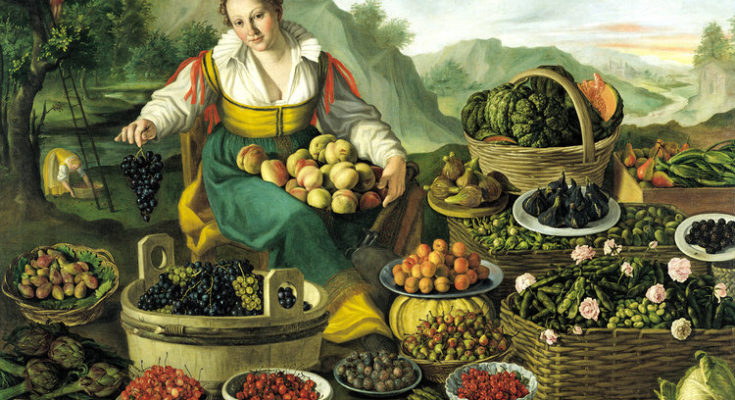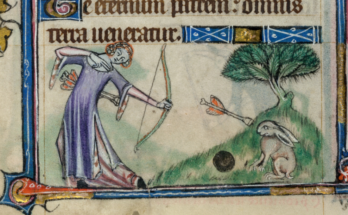Hello Everyone! Baroness Agatha and I are super excited for this year’s Baronial Arts & Sciences (A&S) Championships! As you know, we’re both members of the Order of the Laurel, so this is like our martial tournament, but with creating things from materials and ingredients instead of whacking, poking, flinging, or throwing our tools of mayhem. We’ll be ring-side to a melee of artisans flexing their well researched creativity. And in the end, there will be one victor named the A&S Champion of Endewearde!
So you made a thing for the championship! Huzzah! That’s fantastic! There are a few more things we want you to consider before the competition that will hopefully allow you to present your thing at peak performance. First, have you read the rubric? Second, have you practiced explaining your thing? And third, have you thought about how you will present the fruits of your labor? The judges will want to read and/or hear about *all* your research, materials, tools, process, successes & failures.
Undoubtedly, if you are anything like me, you’ve mentally itemized the details of your research and creation but have procrastinated writing the actual documentation. (But wait! It’s not Friday night! You got time! Heh, heh!) If you’ve written your documentation, well then, good for you! Though it still might be a good idea to review the rubric for your item and verify if you have covered each question asked in the rubric.
If you plan to enter the Baronial A&S Championships, hopefully you have been on the Endewearde Facebook Group and have read that we will be using the East Kingdom A&S rubrics. Her Excellency and I are both strongly compelled to use the Kingdom A&S rubrics because they have been curated and vetted by the best artisans the East Kingdom has to offer. This allows for judges to fairly evaluate garb, leatherwork, scribal work, etc. on a level playing field with blacksmithing, woodworking, or lampworking (to name a few). Artisans who are competitive at our local level should do well at the regional or kingdom levels as well. The rubrics are available here: https://moas.eastkingdom.org/cms/?page_id=599
For this discussion I’ll be talking about the General Rubric (for material objects as opposed to research papers/projects or performance pieces; though the same approach applies). There are 18 questions in 6 categories (2 to 4 per category), each measured on a scale from 1 (minimal) to 6 (exemplary). (Consider maximizing points where you can if hitting 6s across the board isn’t likely (which is very difficult to do anyway). Also, don’t let this intimidate you! I’ll talk about documenting these questions further down.
EK A&S Rubric Simple Summary
Complexity: Work is evaluated on the difficulty and challenge of its creation, and on the sophistication of its goals.
Point Value: Average of 3 (12.5% of the total score)
1. How much time, research, creativity and/or commitment was spent on the work?
2. Did the goals challenge and/or cause exploration of artistic skill and/or knowledge of the artisan?
3. To what degree of difficulty and challenges were faced?
Materials: Work is evaluated on its use of materials (meaning items that are consumed or transformed in the creation process) that are similar or identical to historically appropriate materials. The material choices are supported with evidence and should be appropriate to the time, culture and purpose of the work. Substitutions should be appropriate and justifiable (e.g. not available in modern times, materials are hazardous).
Point Value: Average of 3, times 2 (25% of the total score)
1. What was the balance of modern vs. historical materials used and were any hard to obtain?
2. Degree to which substitutions were used and why?
3. To what degree do the facts support historically accurate materials?
Methods: Work is evaluated on its use of processes, techniques or tools which are identical to or emulate those used in period. The methods are supported with evidence and should be appropriate to the time, culture and purpose of the work. Use of modern methods should be appropriate, and justifiable. (E.g. not available in modern times, method is hazardous). This score is not to reflect the execution or success of the construction.
Point Value: Average of 4, times 2 (25% of the total score)
1. To what degree does the work emulate or use period vs. modern techniques?
2. To what degree are method substitution?
3. How fact based are the techniques and period accuracy?4. How period are the tools?
Historical Context: Work is evaluated on the depth of its connection to an historic time and place, including a discussion and/or demonstration of its use and the cultural context of the work. Cultural context can include information about the purpose of the item, its audience, and its value (social meaning/significance) to society.
Point Value: Average of 2 (12.5% of the total score)
1. How well does the work build a connection to a historic time or place?
2. To what degree is the discussion or analysis of historical and cultural context, and use, meaning, and value of the work discussed?
Sources: Work is evaluated on the use of evidence from many sources. Sources used should be a mixture of analytical (secondary) sources written by knowledgeable experts, and direct (primary) evidence, as available. Artisan should be able to discuss the significance of their sources.
Point Value: Average of 3 (12.5% of the total score)
1. How much direct (primary) evidence or analytical (secondary) sources were you able to use?
2. What is the quality of the sources?
3. How well has the significance and authority of the sources been established?
Execution: Work is evaluated on the skill, workmanship, or artistic ability evident in its creation; in addition, the artisan is evaluated in how well their execution achieved their goals, and how they handled shortfalls.
Point Value: Average of 3 (12.5% of the total score)
1. To what degree does the work demonstrate skill, workmanship, and/or artistic ability?
2. How well does the work achieve the artisan’s goals for the project?
3. To what degree are artistic mistakes and/or limitations in research or methodology acknowledged and “next steps” discussed?
To throw a monkey wrench in it, judges will appreciate it if you can keep your written documentation down to about 2-3 pages. Think about scaling the level of information from an elevator speech to a master’s thesis (conceptually). Briefly highlight the rubric questions in your 2-3 pages (1 or 2 sentences per question). You can always add addendums of work to further explore component pieces of your research. For example, did you make a tool to create your item? Did you research the tool? What materials and process did you use to make the tool? You can also express the details of your work in the artisan verbal interview. (Just don’t forget to mention them! A notecard can be helpful here.) Judges will also appreciate multiple copies (3-4) of your documentation. They only get about 20 minutes with each artisan, so it will save time and increase the accuracy of their assessment if they are not having to share 1 copy between them.
As a side note, presenting your A&S work at public demonstrations and A&S displays are ideal proving grounds for verbally scaling the information about your project. Some people may want a 5-10 second, cursory explanation of your work to decide if it interests them, or they are interested in the 3-5 minute version hitting the highlights, or you just met a fellow artisan in your specific discipline and they really want to talk shop with you. Don’t be offended if people walk past. Learn to read people to decide how much information to unload on them. Aim to have them leaving with a positive, educational experience.
As a suggestion, I have outlined a documentation template to place the 18 questions where they seem appropriate. This is only a suggestion. There are certainly more resources on the EK A&S website (https://moas.eastkingdom.org/cms/).
Cover Page
• Title
• Author
• Date
• Bullet list of high-level key points of your project (30 second description)
Introduction
Tell us what you’re going to tell us.
• What inspired you to make this thing?
• When and where was your thing used?
• How was it used and why is it important?
• What sources did you find about the thing (direct (primary) evidence or analytical (secondary) sources (see References))?
• What are your goals for this project?
Tools & Materials
• What tools and materials are required?
• Are any materials hard to obtain? If so, how did you overcome this?
• Do you have to make any substitutions? Why?
• Were the tools and/or materials modern or historic (cite your sources)?
• Did you make any of the tools or materials?
Construction Process and Techniques
• What are the detailed steps you took to construct your thing?
• How closely does your process emulate the historical process (cite your sources)?
• How much time did it take (parts of the project and/or the total project)?
Conclusions
Tell us again what you told us.
• How closely does your thing match the historical one?
• What did you have to learn (skill or knowledge) to make the thing?
• How hard was it to make the thing?
• Does your work meet your expectations?
• Did you make any mistakes?
• What, if anything, did you discover you need to learn more about to improve your work?
• What are your next steps to improve or expand on your work?
References
See “Artisan Resources > Documentation, Data, and Research” here:
https://moas.eastkingdom.org/cms/wp-content/uploads/Research-Teaching-Notes.pdf
(Be sure to cite your references in the body of your documentation to your list of references here.)
• List of direct (primary) evidence and/or analytical (secondary) sources
Regarding your display, though the judges will focus on your research and item(s) for scoring, there will be LOTS of people walking past to see your work. Why not make a good, first impression for your all your time and effort? Here are some tips to consider:
o Consider a length of material or table cloth to display your work on.
o Consider layering your work with boxes under the cloth.
o Consider display frames, shadow boxes, or other mounts to display your work.
o Consider showing tools and materials used to create your work, especially if you made the tool to create the work.
o Consider labels for your display items.
Poster or 3-Panel Displays
o Use as a story board that describes your work. Lots of pictures, less text (appendix for details).
o Bigger fonts (Suggest main title: 85pt, subheadings: 36pt, body: 24pt, and captions: 18pt)
o Align sections and leave several inches for a border and 1 inch between sections.
o Google “poster design tips” for more ideas on-eye catching posters and displays.
This discussion of documentation, oral & display presentations is meant to be an introduction to preparations for more successful competition in the field of East Kingdom A&S. It is our sincere hope that Artisans of Endewearde have all the support and tools necessary to reach their peak performance.
Best wishes,
Baron Otto Gottlieb, OL
Barony of Endeweade




